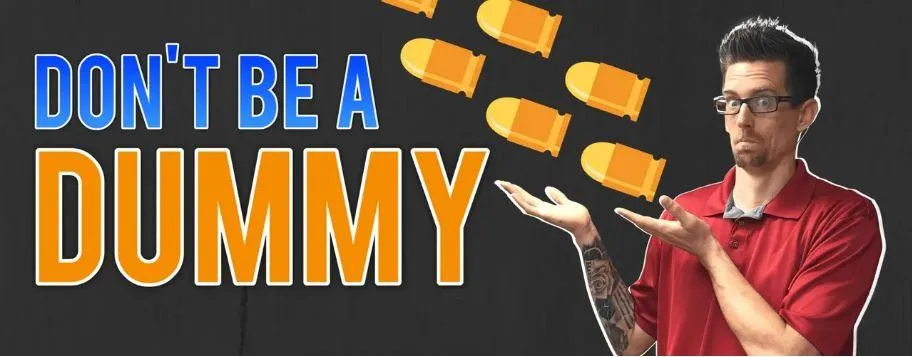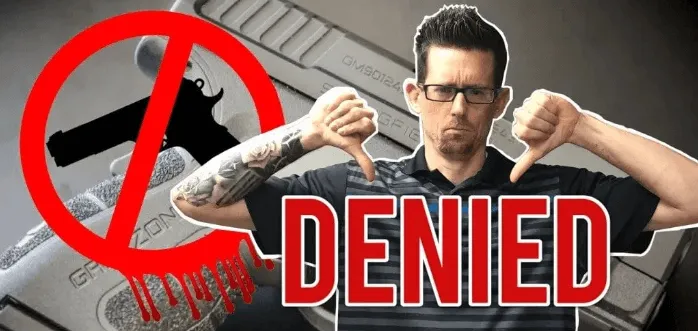Florida Concealed Carry Law Blog
Follow Us for News, Tips , Tricks, Guns Gear and Real Life Stories

What are Dummy Rounds? and Who Needs Them?
What are Dummy Rounds? and Who Needs Them?
What’s Up Sheepdogs? Ryan here with Tampa Carry.
Dummy rounds also known as snap caps, or training rounds, are a training tool that are often under-utilized, but can be implemented into your firearms training to create drastic improvements in your overall firearms efficiency. Basically, a dummy round is an exact replica of live ammunition but is inert. In other words, ammunition that does not fire, nothing comes out or happens when you pull the trigger with dummy rounds.
Snap caps vs dummy rounds: what’s the difference? The words are often used interchangeably, but there is a slight difference. Dummy rounds tend to be made from plastic, while snap caps are replicas of live rounds minus the ammunition. Both are inert and good for dry firing.
What’s the difference between dummy rounds vs live rounds? It’s easy to tell the difference between the rounds when you look at them. A dummy round, which is inert, has a dimpled primer on the bottom. Live ammo do not have the dimpled bottom (and they are definitely not inert.)
What are dummy rounds used for? Dummy rounds or snap rounds are generally used for dry firing practice, to practice loading/unloading, safety protocols, and function checking after repair. They’re an important component of malfunction drills.
In older rimfire and centerfire firearms, dry-firing could actually damage the weapon, and is advised against, hence the creation of dummy rounds to deter damage. But now, most modern firearms are able to be dry fired without damage but dummy rounds are still necessary and the most effective means of training.
Everyone should have dummy rounds, whether you're advanced or a beginner, dummy rounds are a necessity for all gun owners who are serious about safety and training. The best thing is, they're cheap, so there is really no excuse to not have them.
Here are some of the different ways you can use dummy rounds:
Use them to practice loading and unloading.
Placing a round in a mag mixed with live ammunition during live fire training at the range only, forcing a malfunction that you then have to clear.
Practicing smooth, precise trigger pull and control, which should be a smooth, even pull, straight back with the trigger being directly in the middle of the tip of your index finger and the first knuckle bone. Practicing this will minimize trigger jerk, which drops your shot, and pulling the muzzle left or right.
I cover exactly how to practice this in my 21 Day Dry Fire Course. Many people will do thousands of dry fire over several months to prepare for live fire, as well as practice the workings of their weapon.
Implementing dry fire into your training regimen is not only effective, it is also cheap. For this reason, I created two of the best online dry fire training courses in the nation. So many of my students wanted to become more proficient with their firearms, but didn't know how to train properly or what to practice. I created two versions of dry fire training courses because I wanted it tailored for Beginners or Advanced Students.
Never practice any drill with live ammunition!
Our number one goal is to train you how to protect your family, yourself, and be the sheepdog (what is a Sheepdog?) that we all know you to be
Perfect practice makes perfect, and practice makes the master.
That's all I have for today. So until next time keep training and stay safe...
Ryan G. Thomas
Don't Miss a Thing!
Get Notified When We Post a New Article
Most Popular Concealed Carry Articles

Florida Private Gun Sales Rules

Am I Eligible For A Florida Concealed Carry Permit?
Get FREE Access To The Florida Concealed Carry Masterclass™
Join over 60,000 Floridians Who Chose Tampa Carry To Get Their Florida Concealed Carry Permit
All rights Reserved. Copyright 2025 Tampa Carry




